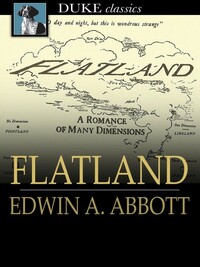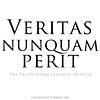You need to sign in or sign up before continuing.
Take a photo of a barcode or cover
allegorical a la Animal Farm. creative, simple to understand story for deeper concepts.
Just an overall delightful read. Every time I put the book down I couldn't help but spend the next hour contemplating higher dimensions, and miserable existence in lower dimensions. Super short chapters and nice to have on hand as a light read when you can get 5-15 minutes in.
adventurous
challenging
funny
lighthearted
reflective
medium-paced
Plot or Character Driven:
Character
Strong character development:
Yes
Loveable characters:
Complicated
Diverse cast of characters:
Yes
Flaws of characters a main focus:
Yes
Second half slapped
challenging
mysterious
reflective
fast-paced
Plot or Character Driven:
A mix
Strong character development:
No
Loveable characters:
No
Diverse cast of characters:
Yes
Flaws of characters a main focus:
Complicated
An ingenious idea used to probe a number of unexpected and insightful topics, from the function of women and religious figures (pun intended) in society to how theology is like trying to hypothesize about another dimension (a single dimension is one point--is God's dimension The Great, All-Containing, Self-Consistent point?). The plot, however, is mostly nonexistent, and I am not entirely convinced there were not some inconsistencies (how are there hills and trapdoors in Flatland?), although some of the confusion in this book may be due to the Victorian era's knowledge of math and science. That being said, the very idea of this book itself is ingenious.
challenging
funny
informative
reflective
medium-paced
Plot or Character Driven:
Character
Strong character development:
Yes
Loveable characters:
Complicated
Diverse cast of characters:
Yes
Flaws of characters a main focus:
Yes
reflective
fast-paced
'Flatland' is amazing. Dimensions are the point of the tale. And the line, the square and the solid cube. (Sorry about being so oblique, but I often angle for a laugh at the beginning of a review, no matter how circuitous.)
The author Edwin Abbott Abbott with a wink and a smile introduces us to the science of geometry in the Victorian Age in this (a)cute story about A. Square. To understand the concepts that these surprisingly charming fantasy characters who live in a two-dimensional world illustrate, I think you need to be either good in math or be a high school graduate. Nevertheless, if you have some mathematics education, this is a fun read which becomes something bigger on the inside. But I was very dubious, initially and I was afraid of a something coincident with the most boring math class I'd ever taken and too much eccentricity.
I circled my living room going around and around (at least 360 degrees, I think). Do I want to read 'Flatland', even for a monthly book club selection? A Victorian Romance, equal to no less than 0 in my estimation, about math? But, a distant chord projected tangentially into my attempts to square the circle and I realized I had transcended my doubts. So, I reached a crossroads of sorts, an intersection in my thoughts. I devised a postulate for myself: I'm at a point between two directions - do I make a line towards the library, or use up valuable space on my Kindle downloading this book? Plus, I'm geometrically opposed to wasting my time. A pain, as if a ray was bisecting the plane of my forehead, warned me I was overthinking this. After all, an endpoint to reading is expanding my universe into different dimensions of ideas. I'd function on a higher plane, I mused. So, after I folded myself into the curvature of my couch, I grabbed my Kindle and made the calculus of how I would squeeze in time to read this dense concept fantasy.
Gauss what? I like it!
The topologies of 'Flatland' (Pointland, Lineland, Flatland and Spaceland) were surprisingly easy to understand. I believe the biographers of Abbott who described the author as an outstanding teacher and writer are correct! He also was surprisingly liberal for a preacher, standing up for women's rights and the extension of upper-class social freedoms to everyone. Additionally, for many Victorians including Abbott, the new scientific discoveries about physics, especially about the possibility of a fourth (and more) dimension, revived a lot of theories about whether discovery of this dimension was the solution to where heaven and/or spirits might live. A pop culture grew up around the new kinds of proto philosophical- and mathematical-based social sciences.
Abbott manages in about 100 pages to tie in all of these social questions while his character A. Square tells us about his life and friends in a two-dimensional city. When he is visited by a sphere, a physical impossibility, it turns Square's mind hyperbolic. However, once the sphere shows him the wonders of his three-dimensional world, two of which being that as a Spaceland citizen, Sphere can see Square's intestines and take money out of safes in Flatland as easy as pi. It seems three-dimensional creatures see straight into two-dimensions because there is no 'roof' to a two-dimensional world, only length and width. It would follow fourth- or other multi-dimensional beings could see into our three-dimensional universe, doesn't it? Boggles the brain proportionally to the black hole of ignorance one possesses before reading this....
The wonders of Flatland go on and on infinitely. For example, Square's wife is a line, as are all women, and the King is a circle, as are all priests. Lower forms (workmen, soldiers, middle-class) are triangles and the noble classes above squares are pentagons and hexagons. Squares are professional men and gentlemen. Intermarriages can be arranged, and babies are born naturally upgraded into a higher rank. The more regular and sided an individual, the better the individual's class, so Equilateral triangles are of a higher class than Isosceles triangles. Women are the lowest class (which was a satirical device - the author actually believed in women's rights). Execution for crimes and rebellions, as well as knowing too much, are common (politics in Flatland sounds very harsh to me, but then I can be quite obtuse).
Frankly, I think there must be a transference of information between universes as anyone can tell you they have discovered me humming a Peace-cry often while cleaning my house. I must admit I am in awe of the unusual symmetries between the deadly needling talents of two and three-dimensional women.
I wonder at the timeless qualities of real and irrational human nature. My mind is a torus of spinning speculation, even turning inside out. This novel has no parallel in modern times, but it was a bit lacking in depth.
The author Edwin Abbott Abbott with a wink and a smile introduces us to the science of geometry in the Victorian Age in this (a)cute story about A. Square. To understand the concepts that these surprisingly charming fantasy characters who live in a two-dimensional world illustrate, I think you need to be either good in math or be a high school graduate. Nevertheless, if you have some mathematics education, this is a fun read which becomes something bigger on the inside. But I was very dubious, initially and I was afraid of a something coincident with the most boring math class I'd ever taken and too much eccentricity.
I circled my living room going around and around (at least 360 degrees, I think). Do I want to read 'Flatland', even for a monthly book club selection? A Victorian Romance, equal to no less than 0 in my estimation, about math? But, a distant chord projected tangentially into my attempts to square the circle and I realized I had transcended my doubts. So, I reached a crossroads of sorts, an intersection in my thoughts. I devised a postulate for myself: I'm at a point between two directions - do I make a line towards the library, or use up valuable space on my Kindle downloading this book? Plus, I'm geometrically opposed to wasting my time. A pain, as if a ray was bisecting the plane of my forehead, warned me I was overthinking this. After all, an endpoint to reading is expanding my universe into different dimensions of ideas. I'd function on a higher plane, I mused. So, after I folded myself into the curvature of my couch, I grabbed my Kindle and made the calculus of how I would squeeze in time to read this dense concept fantasy.
Gauss what? I like it!
The topologies of 'Flatland' (Pointland, Lineland, Flatland and Spaceland) were surprisingly easy to understand. I believe the biographers of Abbott who described the author as an outstanding teacher and writer are correct! He also was surprisingly liberal for a preacher, standing up for women's rights and the extension of upper-class social freedoms to everyone. Additionally, for many Victorians including Abbott, the new scientific discoveries about physics, especially about the possibility of a fourth (and more) dimension, revived a lot of theories about whether discovery of this dimension was the solution to where heaven and/or spirits might live. A pop culture grew up around the new kinds of proto philosophical- and mathematical-based social sciences.
Abbott manages in about 100 pages to tie in all of these social questions while his character A. Square tells us about his life and friends in a two-dimensional city. When he is visited by a sphere, a physical impossibility, it turns Square's mind hyperbolic. However, once the sphere shows him the wonders of his three-dimensional world, two of which being that as a Spaceland citizen, Sphere can see Square's intestines and take money out of safes in Flatland as easy as pi. It seems three-dimensional creatures see straight into two-dimensions because there is no 'roof' to a two-dimensional world, only length and width. It would follow fourth- or other multi-dimensional beings could see into our three-dimensional universe, doesn't it? Boggles the brain proportionally to the black hole of ignorance one possesses before reading this....
The wonders of Flatland go on and on infinitely. For example, Square's wife is a line, as are all women, and the King is a circle, as are all priests. Lower forms (workmen, soldiers, middle-class) are triangles and the noble classes above squares are pentagons and hexagons. Squares are professional men and gentlemen. Intermarriages can be arranged, and babies are born naturally upgraded into a higher rank. The more regular and sided an individual, the better the individual's class, so Equilateral triangles are of a higher class than Isosceles triangles. Women are the lowest class (which was a satirical device - the author actually believed in women's rights). Execution for crimes and rebellions, as well as knowing too much, are common (politics in Flatland sounds very harsh to me, but then I can be quite obtuse).
Frankly, I think there must be a transference of information between universes as anyone can tell you they have discovered me humming a Peace-cry often while cleaning my house. I must admit I am in awe of the unusual symmetries between the deadly needling talents of two and three-dimensional women.
I wonder at the timeless qualities of real and irrational human nature. My mind is a torus of spinning speculation, even turning inside out. This novel has no parallel in modern times, but it was a bit lacking in depth.
adventurous
challenging
lighthearted
medium-paced
Plot or Character Driven:
Character
Strong character development:
Complicated
Loveable characters:
No
Diverse cast of characters:
Complicated
Flaws of characters a main focus:
No
reflective
slow-paced
Plot or Character Driven:
Plot
Strong character development:
Yes
Loveable characters:
Complicated
Diverse cast of characters:
No
Flaws of characters a main focus:
Yes
Really wanna pick this up again sometime. But after a year of “currently reading” I’m trying to get better at admitting when I’ve DNF’d something 😆







